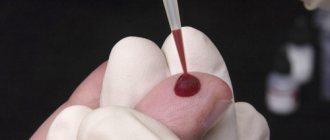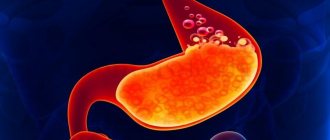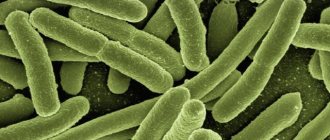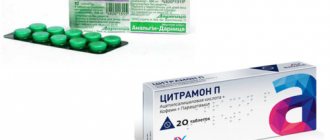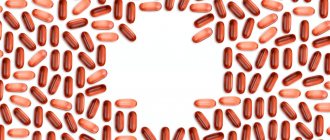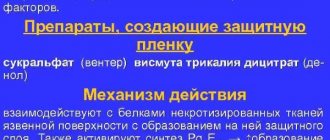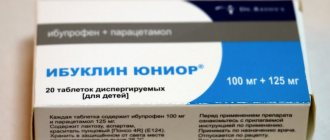The article was prepared by a specialist for informational purposes only. We urge you not to self-medicate. When the first symptoms appear, consult a doctor.
Special medications for the destruction of parasitic worms inhabiting the human body belong to the pharmacological group of anthelmintic drugs.
Tablets for worms are divided into those with a wide spectrum of action, and those that have a selective effect on one or more types of helminths. Before the discovery of modern antiparasitic substances, herbal remedies were widely used to expel worms - male fern extract, pumpkin seed, garlic, toxic chenopodia oil. The products of the pharmaceutical industry offered today for anthelmintic therapy are much more effective and safe than traditional medicine recipes.
It is important that anti-worm tablets are prescribed after an examination has been carried out and the culprit of the infestation has been clarified. Only a doctor will be able to take into account the specific activity of the anthelmintic drug and evaluate the effectiveness of treatment. About 70 species of worms that parasitize the human body are widespread in Russia.
The most commonly diagnosed are enterobiasis (the causative agent is pinworms), ascariasis (roundworms), and giardiasis (giardia, which is not a worm, but a single-celled protozoan). To treat common forms of helminthiases, an infectious disease doctor has about 10 highly effective tablets in his arsenal. Among them are Nemozol, Dekaris, Vermox, Pirantel, Vormil and others.
Anthelmintic therapy is not carried out during pregnancy and lactation, the patient has somatic diseases, viral and bacterial infections, and acute gastrointestinal diseases.
The attending physician selects the dosage of the medicine and the duration of the course of treatment depending on the type of helminthiasis, the patient’s age and state of health, the presence of contraindications and side effects of the drug.
General information
Modern anthelmintic drugs are used to treat people who suffer from various forms of helminthiasis .
All antihelminthic drugs used for humans are divided into drugs for broad-spectrum helminths and drugs for worms that selectively affect certain types of worms. But truly effective pharmaceutical anthelmintic drugs appeared relatively recently, and previously, mainly herbal products were used, such as garlic, pumpkin seeds, male fern extract, etc.
But now there are truly effective and safe anthelmintic drugs that demonstrate anthelmintic activity.
However, it is impossible to independently select specific drugs against parasites in the human body, since it is initially necessary to establish which worms are parasitic in the body. More than 70 species of various parasites are widespread in Russia, each of which can infect the body. And even those antihelminthics that help against all types of worms must be taken as prescribed by a doctor. After all, anthelmintic drugs for people with a wide spectrum of action have many contraindications, so in case of intestinal infection and other types of parasites, they must be taken strictly according to the regimen prescribed by a specialist.
Pinworms are the most common nowadays , affecting the majority of preschool children. Very often, in children, during the testing process, Giardia , which parasitizes the duodenum and is not a helminth, is also determined. Another common type of helminth is roundworm .
Modern pharmacologists offer ten drugs that effectively relieve a person from parasite infection. The most common helminthic infestations are treated with the drugs Vermox, Pirantel, Vormil, Dekaris, Nemozol . Below we will talk about how to take tablets for worms, what are the indications and contraindications for use, which of the existing medications is most effective. The latest generation of anti-worm medications are less toxic, but there are certain general contraindications. Therefore, any universal remedy must be prescribed by a doctor. Thus, treatment of helminths in adults and children cannot be practiced if the patient is diagnosed with acute intestinal infection , or any infectious, viral, or somatic diseases. Such tablets are not used during breastfeeding , and during pregnancy only Piperazine .
Parasites that can infect humans are divided into different groups. Each of them ( cestodes, trematodes, nematodes ) exhibits sensitivity to certain drugs. That is why a doctor should treat helminthiasis in adults and children after conducting all the necessary tests, prescribing either broad-spectrum antiparasitic drugs for humans or specific agents.
How are nematodes or roundworms treated?
Pinworms, photo
Roundworms are parasites that infect humans very often. Nematodes include the following types of parasites: roundworms , pinworms , whipworms , trichinella , toxocaras . The most common among them are roundworms and pinworms. Currently, there are the following drugs against parasites in the human body, which act on roundworms that parasitize the intestines:
| Active ingredient | A drug |
| Albendazole | Vormil , Gelmodol-VM , Nemozol |
| Levamisole | Dekaris |
| Mebendazole | Vormin , Vermox , Vermakar , Vero-Mebendazole , Thermox , Mebex |
| Piperazine | Piperazine |
| Pyrvinium embonate | Pyrivinium , Vanquin , Pirkon |
| Pyrantel pamoate | Kombantrin , Helmintox , Pyrantel , Nemotsid |
| Karbendatsim | Medamin |
If infection with extraintestinal nematoses occurs, treatment of helminths in adults and children is carried out with the following drugs:
- Ditrazine citrate (Diethylcarbamazine);
- Ivermec (Ivermectin).
Since anthelmintic drugs for humans in most cases affect adult parasites, and have almost no effect on eggs and larvae, treatment must be repeated after two weeks. In addition, repeated self-infection with pinworms may occur.
To increase the efficiency of the process of removing parasites, when using certain drugs in the morning, in the evening you need to do an enema or drink a laxative.
How to suspect a parasite infection
In the presence of external parasites (lice, scabies mites, demodex), skin itching occurs, worsening at night. Areas of irritation, redness, blisters, and pustules appear on the skin. Sometimes allergies occur and the temperature may rise.
When infected with helminths, the clinical picture varies, but in all cases there are digestive problems (diarrhea or constipation), anemia and weakness. People lose weight even with an increased appetite, some people’s taste preferences change - a person craves fatty, salty, etc. This is how the body tries to replenish the loss of vitamins and microelements caused by worm parasitism.
Helminth infections are accompanied by bloating, pain in various parts of the abdomen, itching around the anus. Sometimes, during bowel movements, the worms fall out of the anus or come out with feces. With severe infestation, vomiting occurs with the discharge of helminths. In a sick person, the liver and spleen become enlarged and pain occurs in the right or left hypochondrium.
With helminthiases, neurological manifestations caused by poisoning by waste products of parasitic creatures are common: insomnia, irritability, constant fatigue, bruxism (grinding teeth in sleep).
Parasites weaken the body, undermine the immune system, and cause allergies. Manifestations of bronchial asthma are often associated with the presence of helminths (pinworms, whipworms, echinococci).
Medicines for tapeworms or cestodes
Tapeworms are common parasites, which include a large list of different helminths - echinococcosis , teniarinchiasis, coenurosis, dipylidiasis , alveococcosis, sparganosis, dwarf tapeworm, bovine tapeworm , pork tapeworm, broad tapeworm, etc.
When infected with this type of parasite, the following anti-worm tablets for humans are used:
- Niclosamide ( Fenasal ) is used to treat intestinal parasites - tapeworms.
- Albendazole ( Nemozol ) is effective against nematodosis , as well as against infection with mixed helminthic infestations, echinococci, neurocysticercosis, giardiasis. Nemozol can be used if a person is infected with extraintestinal cestodiasis.
- Mepacrin ( Akrikhin ) is an anthelmintic drug that is effective against infection with bovine or dwarf tapeworm, as well as infection with broad tapeworm, giardiasis, etc.
How to treat fluke helminths or trematodes, flatworms
The list of helminths belonging to this class is very wide: these are fascioliasis (liver fluke), opisthorchiasis (cat fluke), clonorchiasis (Chinese fluke), Watsoniosis (liver fluke), paraganimosis (pulmonary fluke), cercariasis (swimmer's itch). This group also includes metorchiasis , heterophyosis, nanophyetosis, gastrodiscoidosis, fasciolopsidosis, schistosomiasis , etc.
The following tablets are effective against all the types listed above:
- Bithionol , Chloxyl are effective against extraintestinal trematodes.
- Perchlorethylene is used for intestinal trematodes.
- Cesol , Biltricid , Azinox , Cysticide (active component Praziquantel) are broad-spectrum drugs that act against different types of worms.
It should be noted that any anthelmintic drugs, especially those prescribed to get rid of tapeworms and flatworms, can only be taken as prescribed by parasitologists. After all, drugs against parasites are very toxic, so the dosage prescribed by the doctor must be strictly followed. When a patient takes drugs for parasites in the human body, maintenance therapy must be carried out (subject to the expulsion of flatworms and tapeworms). You should not take such medications on your own, without the supervision of a doctor.
Popular medications for parasitosis
Babies from six months old and adults are often prescribed the modern drug Helmintox (120-150 rubles). It is available in the form of a suspension and tablets, containing the substance Pyrantel. The drug has a powerful anthelmintic effect, expelling worms from the intestines after paralyzing their nervous system. It shows 100% effectiveness against immature and mature individuals.
Side effects of the drug may be:
- nausea, abdominal pain;
- diarrhea;
- poor appetite;
- increased activity of AST and ALT in the liver.
All these undesirable effects are caused by the release of helminths and the release of large amounts of toxins, and are therefore temporary. According to strict indications, Helmintox can be given even to children up to six months old - under the supervision of a doctor. Admission is carried out once.
Another good remedy is Difezil (180 rubles). It works against whipworms, other roundworms, and tapeworms. Among the contraindications are only severe renal and liver dysfunction. Treatment must be carried out for 5 days in a row, the rate is calculated by the doctor based on the patient’s weight. Sometimes the “side effects” include frequent stools, flatulence, and pain in the intestines, but they quickly go away after recovery.
Is it necessary to use antiparasitic drugs for prevention?
If one of the family members has been infected with pinworms, then preventive methods are necessary for everyone. The level of pinworm infection among preschool children and primary schoolchildren is very high. Worm eggs spread very quickly - this happens through household objects, a handshake, the clothes of infected children, etc. Therefore, questions arise very often about the preventive use of drugs for adults and children.
Experts have differing opinions on whether prevention of worms in humans is necessary. Some believe that if a person takes anti-worm tablets for prevention on one day, it is possible that infection will occur within a few days, and they will be useless. Therefore, prevention of helminthiasis should include washing your hands frequently, maintaining intimate hygiene, changing your underwear every morning, etc. But it is undesirable to take pills to prevent parasites in humans, since they are toxic and have a negative effect on the body. Therefore, it is recommended to replace medications for the prevention of worms in adults and children with the consumption of raw pumpkin seeds or any folk remedy for worms for humans that contains garlic.
However, there are other opinions. Some experts argue that people whose families have small children and primary schoolchildren should take Pirantel . After all, in children's groups there is a high level of infection, and the symptoms of infection are sometimes very mild.
In addition, a child is only able to maintain proper hygiene around the age of 6, so children can constantly become self-infected, just like other family members.
If a negative result was obtained from scraping for enetrobiosis, but the baby still complains of itching in the anus, abdominal pain, nausea, then it is better to take the child for analysis that morning, when he slept poorly at night and was bothered by severe itching. You should scrape again three times, after one day and after two weeks, then you can get a more reliable result.
When do you need to take pills against parasites in the human body for prevention:
- if you keep pets in the house - dogs, cats, etc.;
- with constant contact with the ground (working in the beds, playing in the sandbox);
- when children permanently reside in closed children's groups;
- if a person is interested in hunting, beach volleyball, etc.;
- when traveling regularly to exotic countries.
Parasites are everywhere: outside and inside
The word "parasite" comes from the Greek parasites - parasite. These organisms live and reproduce in the organs and tissues of the host, causing severe illness and even death. Such an infection is called an invasion. Parasites are divided into several groups, depending on their structure and “habitat,” and all of them are very dangerous.
Ectoparasites
This group includes parasitic organisms that live on or inside the skin. They cause itching, dermatitis, allergies, and carry dangerous infections.
- Head, body and pubic lice use their mouthparts to pierce the host's skin and drink blood. Infection with them is called pediculosis. Insects carry dangerous diseases - typhus and relapsing fever.
- The demodex mite (mite) is the causative agent of a disease called demodicosis. The length of the parasite is 0.48 mm, so it is not visible to the naked eye. The mite lives in human hair follicles, causing inflammation (folliculitis) and dermatitis. Damage to the eyebrows and eyelashes also leads to eye infections.
- The scabies mite causes, as the name suggests, scabies. The female parasite, 0.25–0.38 mm long, gnaws through the epidermis (layers of skin) to lay eggs. Scabies are formed in the thickness of the skin. Parasitism causes itching, rash, and allergic reactions. Affected: armpits, groin area, abdomen, interdigital spaces. The disease spreads quickly, because the female lays 3-4 eggs every day, from which larvae hatch after 2-3 days.
Endoparasites
Internal parasites live in the host organs (intestines, kidneys, liver) and blood, causing infection (invasion). There are more than 25 species of endoparasites. Every year, 15–16 million people die due to their fault.
Endoparasites include worms (worms) and protozoa. In recent years, the number of infestations has increased. Hidden forms of parasitism predominate; in 80% of cases the owner does not know that uninvited “guests” have settled in his body. Deaths due to parasitic diseases have also become more frequent. The development of tourism with visits to exotic countries has led to infection with tropical parasites, which in Russian conditions are difficult to identify and destroy.
Helminths
The most common of these parasites are:
- Roundworms are roundworms up to 40 cm long that live in the small intestine. The female lays up to 200 thousand eggs per day. Worms weaken the body, cause anemia and digestive disorders. Having huddled together, the worms clog the intestinal lumen and cause obstruction. Sometimes huge balls of tangled roundworms are removed from a person during surgery.
- Tapeworms (wide tapeworms) are tapeworms that, once they enter the human body, do not produce symptoms for a long time. The helminth, growing, causes bloating, anemia, disruption of the gastrointestinal tract and intestinal obstruction. People become infected with tapeworm by eating poorly processed fish.
- Pork and bovine tapeworms enter the body by eating undercooked meat that contains cysts (larvae) of the worm. Parasites multiply quickly, populating the host's body. A case of one person being parasitized by 104 pork tapeworms, the total length of which was 128 meters, is described. Sometimes tapeworm larvae begin to “walk” throughout the body, causing tissue swelling, high fever and muscle pain.
- Pinworms are small worms that live in the intestines. They are not as harmless as they seem. Infection causes allergic reactions; helminths crawl into the appendix, causing inflammation.
- Nematodes are a group of roundworms that parasitize the intestinal tract. Worms cause irritation of the intestinal wall and blockage of the bile ducts. 45 species of nematodes inhabit the human body. The most common are intestinal eel and whipworm.
Some worms live outside the gastrointestinal tract, causing extraintestinal helminthiases (flukes, echinococcus, pork tapeworm cysts). They cause damage to the nervous system, brain and internal organs. Patients have a fever, swelling, and blood in the urine. Dirofilariasis is dangerous, in which parasites are found in the heart. The parasite causes pain similar to the manifestation of ischemic heart disease.
Protozoa
In recent years, protozoan parasites have become widespread, affecting various organs and tissues:
- Giardia is an organism that affects the small intestine and leads to peristalsis disorders. The disease is often asymptomatic.
- Trichomonas and chlamydia are protozoa that cause inflammation of the genitourinary system.
- Blastocysts are intestinal parasites that irritate the mucous membrane and reduce immunity.
- Dysenteric amoebas are protozoa that cause a protracted form of ulcerative colitis. A person experiences abdominal pain, loose stools, and fever. The disease is dangerous due to intestinal perforation.
What to do if worms appear during pregnancy?
During pregnancy , a woman can, of course, become infected with parasites. What to do in such a situation, because during this period you need to be very careful when using medications? Treatment of worms during pregnancy must be carried out very carefully, since not all drugs are suitable for women in this condition. Treatment of pregnant women with worming tablets in the first trimester is prohibited. After all, medications are very toxic, so they can be much more dangerous for the expectant mother than parasites. If a pregnant woman has worms, the doctor will explain what to do.
During pregnancy, parasites can be removed with medication only with the help of the drug Piperazine . You need to take medications like this:
- as a medicine for roundworms - twice a day an hour before meals or an hour after, for two days at a dose of 1.5-2 g;
- to fight pinworms - in the same dose for five days, followed by a one-week break, a total of 1 to 3 courses.
If the expectant mother has become infected with pinworms, there is no need to worry about this. Provided that the woman strictly follows the rules of hygiene, self-healing can occur. After all, the life span of pinworms is short - a few weeks. Therefore, you need to steam your underwear and wash more often to avoid reinfestation. To prevent infection or re-infestation, you should wash your hands very thoroughly with soap and water:
- after visiting the toilet;
- after changing linen;
- after contact with animals;
- before eating.
You should also be sure to wash all fruits and vegetables.
Treatment for worms in pregnant women
During pregnancy, a woman's immunity decreases, and the likelihood of infection with parasitosis increases. Worm infestation is harmful to both the mother and the fetus, because it does not receive enough nutrients. Most medications are contraindicated for the expectant mother, and traditional medicine is not always effective. The drugs cause maximum harm up to 12 weeks, that is, in the first trimester, when the formation of fetal organs occurs.
Treatment for worms in pregnant women is always carried out in the 2-3 trimesters, not earlier. Piperazine, which is the most gentle, is usually prescribed against roundworms. For health reasons, Nemocid and Helmintox can be used, but treatment is carried out only in a hospital. If a woman has tapeworms, Azinox is prescribed with great caution under the supervision of a doctor. It is advisable to get rid of parasites before gestation to avoid problems in the future.
The most effective anti-worm tablets for humans
In no case should you be guided only by the fact that user reviews on the forum indicate that this or that drug is a good tablet for worms. You should not buy medications knowing only the name of tablets for worms in adults and children.
You should definitely ask a specialist about which deworming tablets are best for adults and children. Indeed, in order to choose the most effective tablets for worms in humans, it is important to take into account what kind of parasites a child or adult is infected with. After all, even broad-spectrum antihelminthic drugs for humans contain different active components. Accordingly, contraindications, side effects, route of administration and dosage differ. The price of deworming tablets also differs. Below is a description of what deworming tablets are called, how to take these medications, their contraindications and possible negative effects.
Dekaris
Active ingredient: Levamisole .
This effective remedy for worms in adults and children not only kills parasites, but also produces an immunomodulatory effect . However, it can only be used after a doctor’s prescription, since the tablets can not only kill helminths, but also harm the body, as they produce many side effects, and this can provoke negative consequences.
Indications: for roundworms, pinworms, necator, hookworm, whipworm, intestinal eelworm, toxoplasmosis , trichostrongylosis.
Contraindicated for children under 3 years of age, breastfeeding , and agranulocytosis. 150 mg tablets should not be used to treat children. Decaris should be used with caution in people who suffer from renal and liver failure , as well as in patients with suppressed bone marrow hematopoiesis.
Instructions: adults are prescribed one 150 mg tablet once, after meals, in the evening. Children from 3 to 6 years old – 25-50 mg once. Children from 6 to 10 years old – 50-75 mg once. Children from 10 to 14 years old - 75-100 mg once.
The course is repeated after 2 weeks. Diet or laxatives are not necessary. Side effects: after use, abdominal pain, nausea, diarrhea, vomiting, insomnia , dizziness , allergic manifestations, confusion, stomatitis, etc. are possible.
Price – from 80 rub.
Helmintox, Pyrantel, Kombantrin, Nemotsid
The active ingredient is pyrantel.
The drugs Helmintox , Combantrin and Pyrantel are indicated for hookworm, ascariasis , trichuriasis , necatoriasis, and enterobiasis. These tablets for treating parasites in the human body are the safest and most effective for treating children. Most often they are prescribed for ascariasis and enterobiasis .
Contraindicated in case of hypersensitivity, tablets should be prescribed with caution to children who are not yet six months old, nursing mothers, and people with liver failure.
Description of instructions: for adults in case of ascariasis, pinworm infection or mixed infestation, a single application in the morning, after breakfast, is sufficient. The dose is taken at the rate of 10 mg/kg. Children from six months to 2 years old are recommended to take 125 mg, children from 2 to 6 years old - 250 mg, from 6 to 12 years old - 500 mg.
In order for the fight against parasites to be successful, the course must be repeated after 2-3 weeks to avoid self-infection.
If a patient is diagnosed with mixed invasion, then the drug must be taken for 3 days at a rate of 10 mg/kg per day, or for two days at a rate of 20 mg/kg per day. If isolated ascariasis is noted, you need to drink the drug once at a rate of 5 mg/kg. It should be noted that Pirantel are chewable tablets, so they should not be swallowed, but chewed.
Side effects: after administration, vomiting, dizziness , nausea , urticaria insomnia , drowsiness , headache , hyperthermia, paresthesia, etc. are possible.
You can buy Helmintox at a price of 80 rubles, Pirantel - from 50 rubles.
Vermox, Wormin, Vermakar
The active ingredient is mebendazole .
A medicine for worms for humans with this component is indicated for enterobiasis, ascariasis, multiple nematodes, strongyloidiasis, capillariasis, hookworm disease , trichinosis , echinococcosis, taeniasis, alveococcosis, gnathostomiasis, trichuriasis.
These are effective medicines for worms in adults and children, each of which is especially good for infection with pinworms and roundworms.
You should not take these tablets during pregnancy and breastfeeding, with ulcerative colitis, liver failure, Crohn's disease, and do not prescribe medications to children who are under 2 years of age.
Method and regimen of use: Vermakar, Vormin, Vermox suspension or tablets are taken with a small amount of liquid. To recover from enterobiasis, children from 2 to 10 years old should drink 25-50 mg of the drug once, adults - 100 mg. You need to take the product again after 2-4 weeks.
If a patient is diagnosed with strongyloidiasis, taeniasis, trichuriasis, hookworm, ascariasis or mixed helminthiasis, deworming is carried out as follows: for 3 days, take 100 mg twice a day.
In the case of trichinosis - 200-400 mg three times a day, then, from 4 to 10 days - 400-500 mg three times a day.
When infected with echinococcosis, take 500 mg three times a day for 3 days, then the dose should be increased to 25-30 mg per 1 kg of weight.
Side effects may occur in the form of dizziness, nausea, and abdominal pain. If the drug is used for a long time, vomiting, allergies , diarrhea , headache, anemia, eosinophilia , leukopenia, cylindruria, etc. are possible.
The cost of Wormin is from 140 rubles, Vermox – from 100 rubles.
Vormil, Nemozol, Aldazole, Gelmodol-VM, Albendazole, Gelmizole
The active ingredient is albendazole .
These anthelmintics are indicated for nematodes, toxocariasis , strongyloidiasis, echinococcosis of the liver, lungs, peritoneum, if the causative agent is the larval form of Echinococcus granulosus, as well as for giardiasis and other protozoa, mixed invasions, neurocysticercosis, if the causative agent is the larval form of Taenia solium.
Contraindicated in pregnancy, hypersensitivity, retinal damage, and for children under 2 years of age. Caution should be taken during breastfeeding if hematopoiesis or liver function is impaired.
Directions for use: Nemozol, Gelmodol-VM, Vormil should be taken during meals.
Nemozol for nemazodes is taken once: treatment of helminthiasis in adults involves taking 400 mg of the drug, children over 2 years old - 20 ml in the form of a suspension.
If the patient is infected with echinococcosis or neurocysticercosis, adults weighing more than 60 kg should drink 400 mg twice a day, if weighing less than 60 kg - 15 mg/kg/weight twice a day. The course of therapy for neurocysticercosis ranges from 8 to 30 days, the course of therapy for echinococcosis is three courses of 28 days, with breaks between courses of 2 weeks.
If Nemozol is prescribed to children for giardiasis, then a dose of 10-15 mg/kg should be used once a day for a week.
If a child has toxocariasis, then patients under 14 years of age are prescribed tablets twice a day, 10 mg/kg. Adults weighing up to 60 kg receive 200 mg of the drug twice a day; if the weight is more than 60 kg, then the patient receives 400 mg 2 times a day. The course of treatment is 1-2 weeks.
If antiparasitic treatment with these drugs is carried out, side effects may include abdominal pain, impaired liver function, nausea, vomiting, headache, dizziness, increased temperature and blood pressure, renal failure, pancytopenia, leukopenia, thrombocytopenia , etc.
Nemozol costs from 175 rubles in pharmacies. Aldazole – from 100 rub.
General purpose drugs - the most famous
Experts often prescribe Pirantel (RUB 72) for the treatment of parasitosis. The active substance of the same name causes a neuromuscular blockade of worms, thereby paralyzing them. The drug acts even on immature individuals of both sexes. Has proven itself to be excellent for:
- ascariasis;
- necatorosa;
- hookworm;
- trichocephalosis;
- enterobiasis.
The medicine can be given to children, but from 6 months. It is contraindicated during pregnancy, lactation, and hypersensitivity. Usually it is enough to take 1 tablet after breakfast, calculating the dosage of 10 mg/kg. After 14-21 days, the dose is repeated to avoid self-infection. If the infestation is mixed, it is better to take Pirantel for 3 days at the same dose in the morning.
The medicine Vermox (65 rubles) contains the anthelmintic substance Mebendazole. Indications include a huge range of helminthiasis - gnathostomiasis, alveococcosis, echinococcosis, ascariasis, enterobiasis, trichinosis and others. The drug should not be taken by children under 2 years of age, people with Crohn's disease, children, pregnant women, or ulcerative colitis. It is drunk once or for 3 days; it is advisable for children to purchase it in the form of a suspension.
Other popular remedies for parasites are Pharmox, Zentel, Aldazole.
For people with diabetes and kidney and liver failure, the dosage of even simple medications should be selected only by a doctor!
Worms that are common in Russia
Roundworms, photo
- Both in Russia and in Ukraine, the most common are roundworms and pinworms , which are very easy to become infected even in big cities - in Moscow, Kiev.
- Pork tapeworm is also common ; this parasite is especially common in Belarus and Ukraine. Trichinella is also found on the territory of these countries , as well as in the northern, central, and eastern regions of Russia.
- Broad tapeworm is often found near bodies of fresh water ; infections are not uncommon in Karelia, Siberia, the Volga region, the Baikal region, the Far East, Kazakhstan, the Baltic states, and in large river basins.
- Whipworm infestation occurs in tropical and subtropical zones where the climate is humid and warm. Therefore, people often become infected when visiting resorts.
- Bovine tapeworm is common in different countries, but is most often infected in Transcaucasia and Central Asia.
- Dwarf tapeworm is most common in hot, dry climates.
- The largest foci of opisthorchiasis are located in Western Siberia, Kazakhstan, and large river basins.
- The pulmonary fluke is common in the Far East.
- The largest areas of distribution of the liver fluke are in the north-west of Russia, Transcaucasia, the Baltic states, and Central Asia.
- An increased risk of infection with the Chinese fluke is noted in the Far East, in the Amur basin.
- Widespread distribution of alveococcosis and echinococcosis is observed in Transcaucasia, Ukraine, Volgograd and Rostov regions, Bashkortostan, Yakutia, Stavropol, Altai and Krasnodar territories.
Diet pills with worms
In an effort to find an ideal figure, women often resort to a variety of tricks. In some cases, these are even more extreme methods than a strict diet or body cleansing. There are “miracle” pills that are contaminated with worms and promote weight loss. However, every woman should be clearly aware that such pills are a very dangerous drug for health. If you drink such “modern miracle remedies”, the body will become intoxicated , it will gradually become infected with poisons secreted by parasites, as a result of which the person, of course, will immediately lose weight. But at the same time he will constantly feel sick, ulcers and rashes will appear. Therefore, it is definitely not worth practicing such weight loss and poisoning the body. After all, in the end you will not get rid of excess weight, but the development of serious diseases - cholecystitis , cirrhosis , etc.
Other drugs
Trying to find the most harmless drugs against worms for children with a wide spectrum of action, parents, as a rule, pay attention to the most well-known names of drugs and sometimes buy them without first consulting a doctor. This should not be done under any circumstances, because the list of medications for parasites in the human body is quite wide, and sometimes it is necessary to take not a universal remedy, but a medicine aimed at combating a specific parasite. Therefore, only online drug reviews should not be a guide to action.
In addition to the drugs described above, there are other anthelmintic drugs and agents. Ivermectin is a broad-spectrum deworming tablet for people . However, Ivermectin is most effective in treating infections caused by roundworms. Also used in veterinary medicine.
Metrifonate is used in the treatment of genitourinary schistosomiasis.
Currently, you can also purchase anthelmintics for humans, which doctors prescribe for certain types of parasites.
The drug Medamin , containing the active component Carbendacim, is an anthelmintic agent active against intestinal nematodes. Medamin is used if a person has trichuriasis, ascariasis, hookworm disease, enterobiasis, necatoriasis. What side effects does this drug cause? Allergic manifestations, weakness, nausea are possible.
Ditrazine (Ditrazine citrate) is used to treat filariasis, a disease caused by filarial worms. It works for ascariasis, but is less effective than other drugs.
Sometimes it is necessary to use additional topical agents. Dermokas cream is used for dermatoses, if complications caused by a secondary infection are suspected. Dermokas is also used for fungal skin diseases.
If the patient is faced with the question of how to cure a parasitic infection, you can also pay attention to drugs for the treatment of worms in adults that contain herbal components. As a rule, they are used as adjuncts, in parallel with drugs prescribed by the doctor as drug treatment.
The medicine Glistogon contains magnesium sulfate, garlic, cloves, walnuts, wormwood, and pumpkin seeds. The medicine helps get rid of parasites and prevents the development of resistance to anti-worm medications.
The homeopathic remedy Antigelmin is taken sublingually for 1-2 months.
Antihelmos capsules contain eucalyptus leaves, yarrow herb, and cloves.
Telochist is a biological supplement, which, however, also cannot be used without the approval of a doctor.
Thus, despite the abundance of remedies, a doctor should explain how to get rid of worms in adults and children by prescribing the correct treatment regimen, taking into account the compatibility of the drugs.
